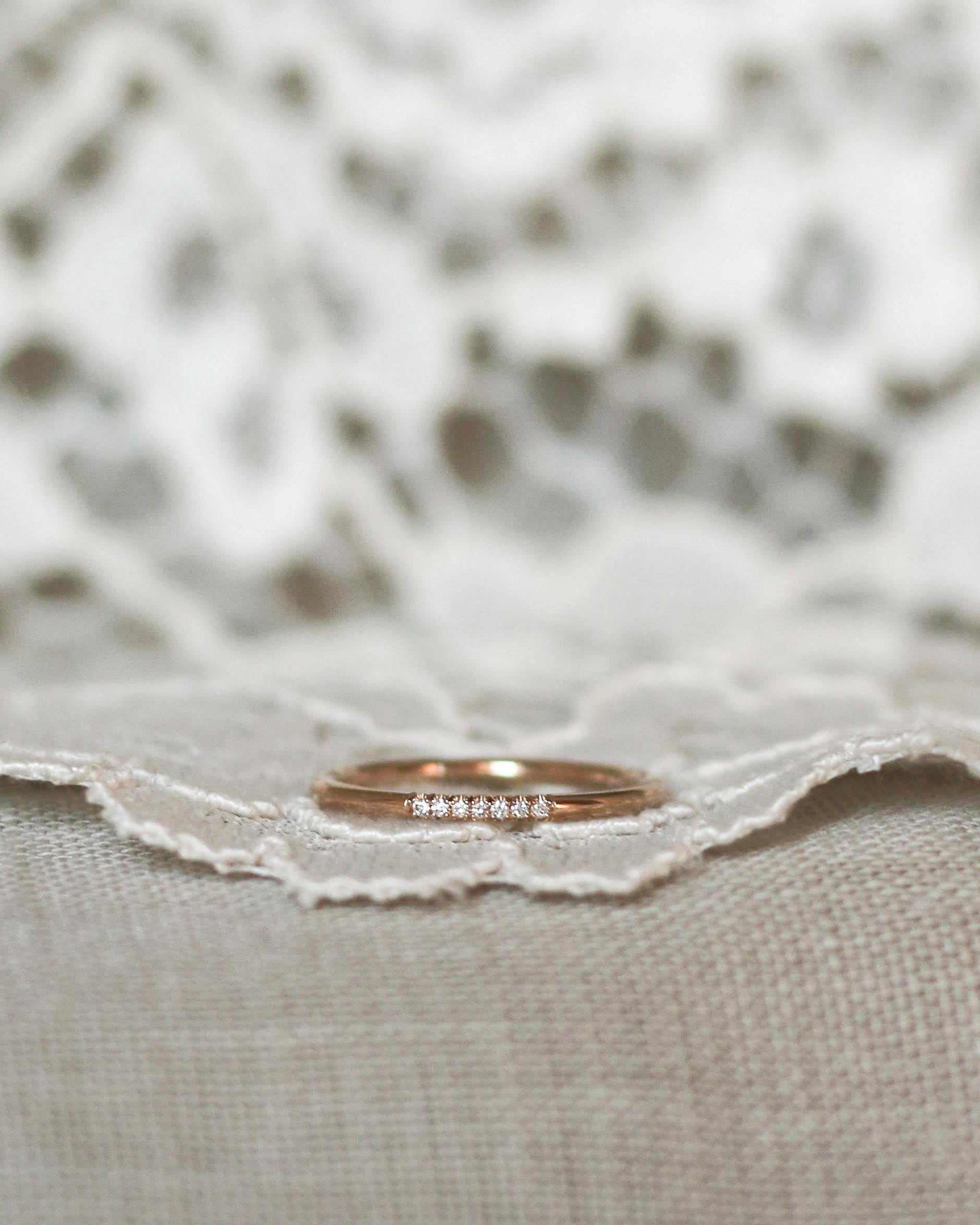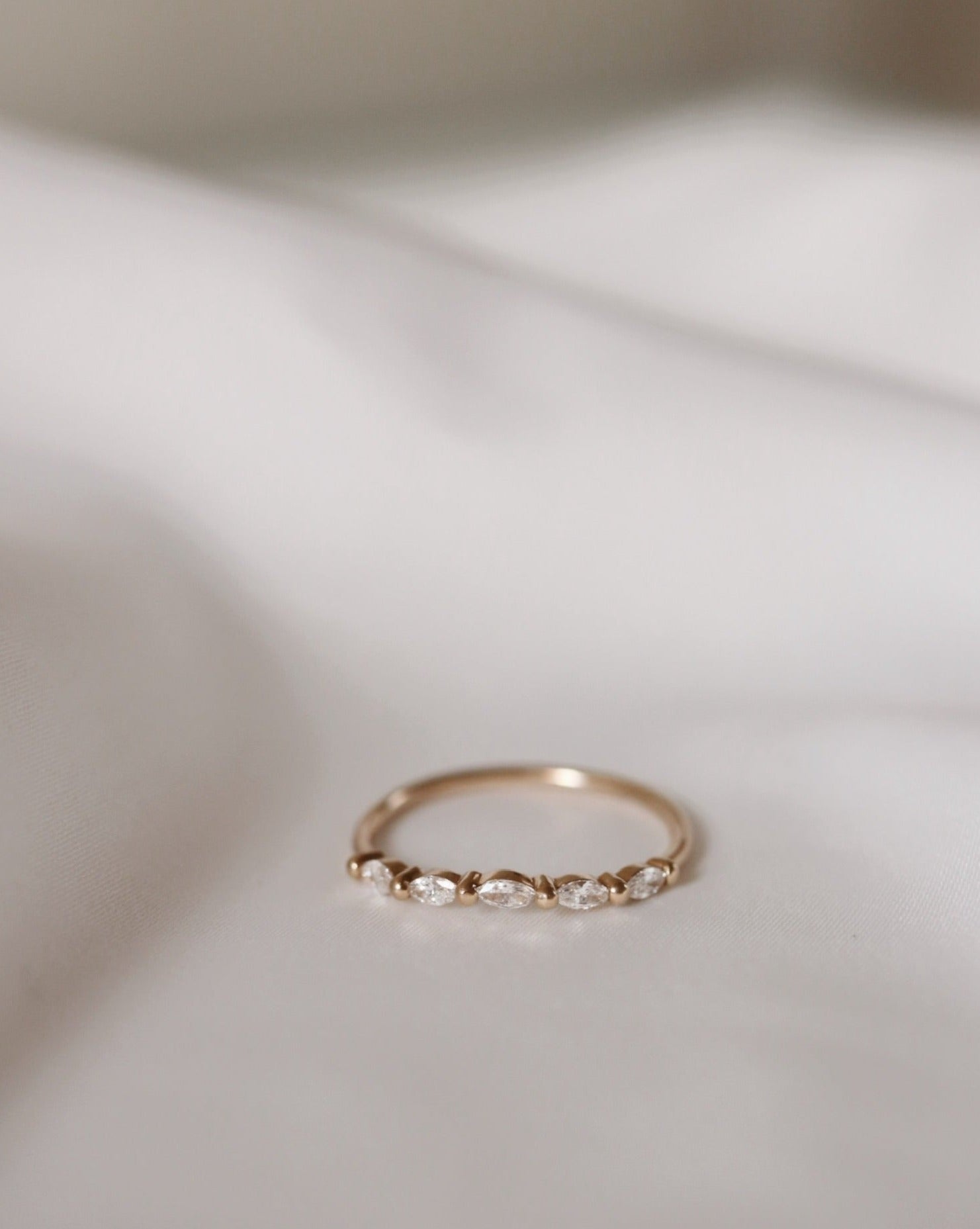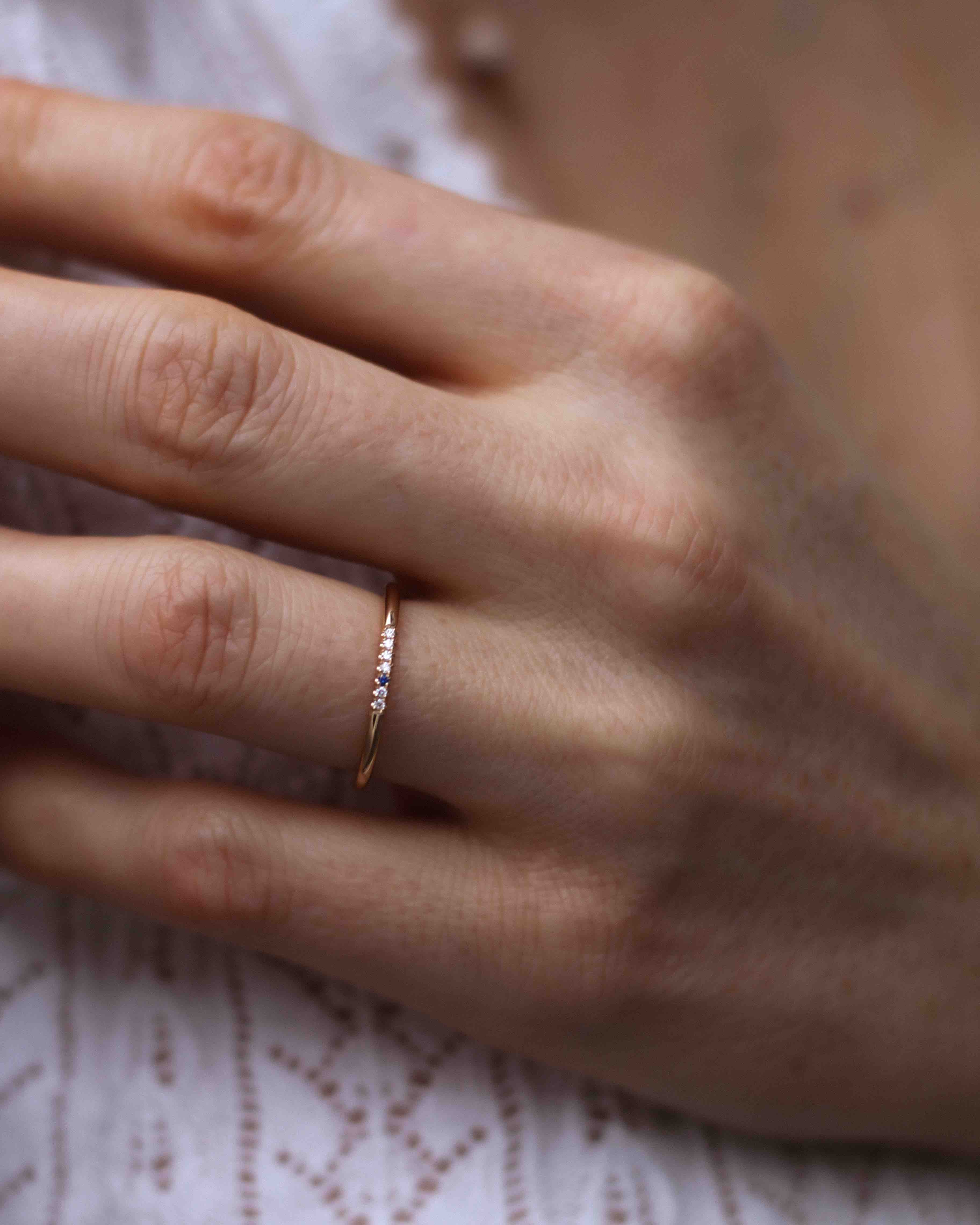In this article, I share the ten most frequently asked questions and answers about the difference between natural diamonds and lab-grown diamonds (also known as synthetic diamonds). This is something that has appeared more and more in recent years and it is high time to dive deep into the subject! Which is really better - natural diamonds or synthetic diamonds? Written by: Cecilia Kores
How are you supposed to know which diamond is the best from an environmental point of view?
Which diamond holds its value best on the secondary market?
Is a lab-grown diamond classified as a gemstone?
Can you tell with the naked eye if a diamond is natural or synthetic?
Find out all that in this article, where I share the top 10 questions and answers about natural and lab-grown diamonds.

1. What is a diamond?
A diamond is simply pure carbon that has crystallized into a transparent, often colorless (what we call white) and extremely hard mineral.
In Sweden, when you use the word "diamond", we mean the natural diamonds that are created through a geological process in nature. Artificial diamonds must referred to with the prefix "synthetic".
This means that all diamonds sold in Sweden as diamonds, you can assume are natural. Otherwise it must be called synthetic diamond.
In the definition given to diamonds by the "Union of Precious Stones" - World Jewelery Confederation (abbreviated as CIBJO) - it is stated that: "a diamond is a mineral that has been formed completely without human intervention. It can then be ground and polished. "
CIBJO has 40 member countries worldwide, and it is they who publish the regulations for diamonds called "The Diamond Blue Book".
2. What is the definition of a synthetic diamond?
It is a diamond that is created artificially, by humans (therefore they are also called man-made diamonds) through a controlled process in a laboratory. Other names for synthetic diamonds are lab-grown diamond, cultured diamond or man-made diamond.
In 2018, the United States removed the word "natural" from the definition of a diamond. There, both natural and synthetic diamonds are sold as just "diamonds". As long as it is "clear from the context that it is not natural" then you don't have to use the word synthetic at all in the US.
In 2018, the United States removed the word "natural" from the definition of a diamond.
In Sweden, you must use the prefix "synthetic" when referring to non-natural diamonds. This follows the guidelines from Sweden's National Gemmological Association and CIBJO. But the US has chosen not to be part of CIBJO and therefore does not have to follow their guidelines.
I call gemstones nature's hard flowers. Jewelery with natural gemstones from Mumbaistockholm
3. How is a natural diamond created and what is the difference to a lab-grown diamond?
A natural diamond is formed deep in the earth, through a process where extremely high pressure and high temperatures bind carbon atoms together into the unique structure that is a diamond, and which is one of the hardest - and most light-reflecting - materials we know today. The natural diamonds that we find in the earth today are about 3 billion years old.
Synthetic diamonds grow in a laboratory where the exact same conditions of extremely high pressure and high temperature are reproduced artificially. A synthetic diamond only needs a couple of days to grow in a laboratory - a 10 CT synthetic diamond only takes 10 days to grow in a lab! (Which is why they're so cheap - or should be - but we'll get into that further down.)
Natural diamonds are 3 billion years old - while a 10 CT synthetic diamond only takes 10 days to grow in a lab!
A synthetic diamond has the same chemical properties as a natural diamond - so it's no wonder it became a big deal when the synthetic process for growing diamonds was developed in the 1950s. Since the production of synthetic diamonds was much cheaper and the supply endless, it meant that diamonds could be used more widely for industrial purposes. It was actually an industrial company - General Electric (GE) - that was the first to patent the process of creating synthetic diamonds.
In the 80s, it became possible to create "gem quality" on synthetic diamonds, and that's when they began to be used in jewelry. Before that, synthetic diamonds had almost always been yellow in color and had too many inclusions to be attractive in jewelry. Today, the synthetic diamonds are almost always flawless, because you can create "perfect" conditions in a lab.
4. What two different methods of growing synthetic diamonds are there?
HPHT (High Pressure High Temperature) - where a synthetic diamond crystal is used as a starting point and then carbon atoms and hydrogen are added to grow the crystal.
CVD (Chemical Vapor Deposition) - it uses the same seed crystal as for HPHT but instead of growing into a crystal, it grows into a kind of flat diamond plate with a frame around it.
The largest producers of synthetic diamonds today are China, Russia and India. The majority of them are sold in the United States.
The largest producers of synthetic diamonds today are China, Russia and India. The majority of them are sold in the United States.
5. Is a synthetic diamond a gemstone?
The definition of a gemstone is a stone that meets the following four requirements: it is beautiful, rare, durable and hard . As the number of synthetic diamonds on the market has increased, CIBJO has added to the definition that it also must have been created naturally without human intervention.
A laboratory-grown diamond is by definition not rare, nor created by nature, so it therefore does not qualify as a gemstone.
6. Can you tell with your eyes if a diamond is natural or synthetic?
No, you must examine the stone in a laboratory or by using special instruments.

Which are more environmentally friendly - synthetic or natural diamonds? All jewelery Mumbaistockholm
7. Which are more environmentally friendly - natural diamonds or lab-grown diamonds?
In 2019, a report was released that compared environmental and social responsibility in the natural vs. the synthetic diamond industry. The report was made at the request of the Diamond Producers Association (DPA), which consists of seven of the world's largest diamond producers (De Beers, Rio Pinto, Lucara and Petra Diamonds among others), which together account for 95% of the world's (natural) diamond production.
The study took two years to complete and was completely transparent.
It concluded that the production of synthetic diamonds emits three times more carbon dioxide than the natural diamond mining industry.
A 1 CT natural diamond requires 160 kg of Co2, while a 1 CT synthetic diamond requires 511 kg of Co2.
The production of synthetic diamonds emits three times more carbon dioxide than the natural diamond industry.
It was also revealed that the natural diamond mining industry paid employees on average five times more than the average worker in other sectors in the same countries, but the same comparison was not seen for the synthetic diamonds. Although the report has received some criticism, this is the first major study that has been done with the goal of clarifying the difference between the production of natural and synthetic diamonds. If you want to check out the study, it was done by Trucost ESG Analysis.

It is not possible to tell with the naked eye whether a diamond is natural or synthetic/lab grown. Rings with natural diamonds, Mumbaistockholm
8. Are the natural and synthetic diamond industries regulated? Are there certificates for lab-grown diamonds?
The natural diamond mining industry is heavily regulated (for example through the Kimberley Process, which aims to prevent conflict diamonds from circulating on the mainstream market) and is often subject to third-party inspections to monitor environmental aspects, human rights and social impacts of production and trade (factors which the Kimberley Process does not cover).
For synthetic diamonds, these regulations do not exist and oversight of the many small business synthetic diamond manufacturing processes is limited.
However, certificates are provided for both natural diamonds and synthetic diamonds. All the major certification companies today (GIA, HRD and IGI) offer certificates that show the quality of the cut, karat, clarity (ie inclusions) and color. The certificates for synthetic diamonds are printed in different colors so that they can be easily distinguished from the certificates for natural diamonds.
What is important to keep in mind is that a certificate only shows the visible quality of a particular stone - certificate from e.g. GIA does not show whether the production method has been ethical or sustainable. The certificate simply answers questions such as the clarity of your stone and how well cut it is. The purpose is that you know what to pay for your stone (so no one tricks you into saying the stone is finer than it is and gives you a higher price), that the value on the secondary market is maintained, and that most people simply want to know what quality of stone you have bought!
9. How much does a synthetic diamond cost compared to a natural one?
Because you can produce an unlimited amount and at a much faster rate, synthetic diamonds are priced lower than natural diamonds. However, the market for synthetic diamonds remains highly unregulated, and consumers are generally given limited knowledge of the true value - with the result that the price of a synthetic diamond can vary between 10-90% compared to a natural diamond of the same CT and quality. Right now it seems that the market is catching on to this (and more producers are appearing, increasing the supply of synthetic diamonds), with the result that the price of synthetic diamonds is falling more and more.
The price of a synthetic diamond can vary between 10-90% compared to a natural diamond with the same CT and quality.

Whether you choose a natural diamond or a lab-grown diamond, make sure you're paying the right price for it. The more you learn, the better investments you can make! Earring with a natural green tourmaline and white natural diamonds, frfrom Mumbai to Stockholm
10. Do synthetic diamonds have a resale value?
There is still no used market for synthetic diamonds because no pawnshops, auction houses or vintage shops want to trade them. In the long term, many in the industry believe that synthetic diamonds will lose their value completely, in the same way that synthetic rubies and sapphires lost value in the 20th century.
The inspiration for this article
Just came off a showroom meeting this weekend where my colleague took in a girl who had booked with us specifically because she thought we only worked with lab grown diamonds. Then I felt I needed to write an article to go over the difference between them and the natural diamonds. Sustainability is for us, just like for most modern companies, a non-negotiable - it is something that is at the top of our minds for all of us who want a beautiful world to remain, even after many years. The question we are all debating now is which is the best way to get there!
And regarding the customer who booked with us, she ended up buying a Not At All Tiny Ring with a natural chocolate diamond! After getting more information about the different diamonds, she chose a natural one. It will be exciting to see what you will choose after reading this article!
Feel good,
Cecilia






































































1 comment
Tack för en bra artikel! Jag valde en labbodlad diamant efter denna artikel. Diamantbrytning överlag är väl inte den mest etiska eller klimatsmarta branschen överlag. Och om då andra hands värdet är största faktorn så kände jag mig bekväm med att välja en med lågt materiellt värde. Det är ändå det emotionella värdet som betyder mest för oss. Så tänker vi iaf 🤗
Leave a comment